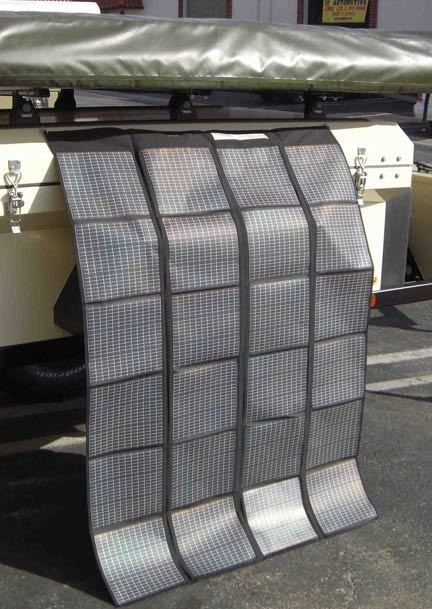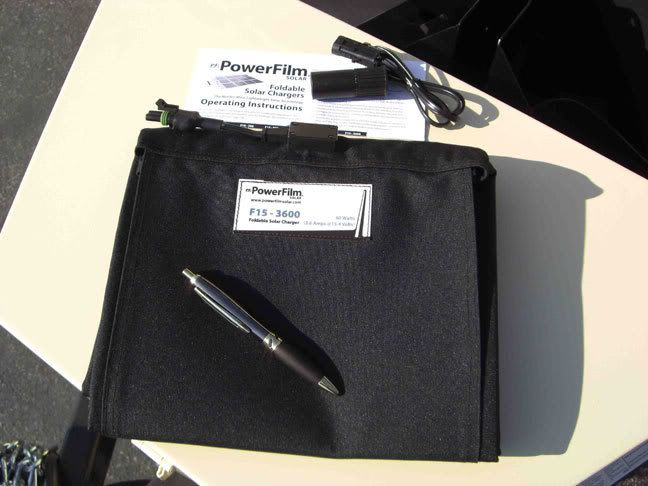Martyn
Supporting Sponsor, Overland Certified OC0018
We have been testing foldable solar panels by PowerFilm in the field for a while now, and we are very impressed by the quality and durability of them.
For our needs the 60 watt panel has worked out well, it's powerful enough to run an Engel 45 fridge, providing 3.6 amps at 15.4 volts.
The setup is completely plug and play, with the charge controller built in and a 12 volt outlet on the other end.
The 60 watt panel is 59" long and 43" wide, folded away it fits into a bag that's 11" x 9.5" x 2". The whole thing weighs 3.19 lbs. Very impressive. :sunny:
The 60 watt unit is identical to the one Scott B. took with him on his expedition to South America that left a few days ago.
The 60 watt panel retails for $899.00 and we also have 5 watt, 10 watt, and 30 watt panels. e mail me for pricing on those.
More information on size, weight, and power is available at http://www.adventuretrailers.com/12volt_solar.html


For our needs the 60 watt panel has worked out well, it's powerful enough to run an Engel 45 fridge, providing 3.6 amps at 15.4 volts.
The setup is completely plug and play, with the charge controller built in and a 12 volt outlet on the other end.
The 60 watt panel is 59" long and 43" wide, folded away it fits into a bag that's 11" x 9.5" x 2". The whole thing weighs 3.19 lbs. Very impressive. :sunny:
The 60 watt unit is identical to the one Scott B. took with him on his expedition to South America that left a few days ago.
The 60 watt panel retails for $899.00 and we also have 5 watt, 10 watt, and 30 watt panels. e mail me for pricing on those.
More information on size, weight, and power is available at http://www.adventuretrailers.com/12volt_solar.html



